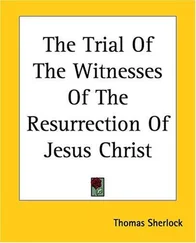Thomas à Kempis - The Chronicle of the Canons Regular of Mount St. Agnes
Здесь есть возможность читать онлайн «Thomas à Kempis - The Chronicle of the Canons Regular of Mount St. Agnes» — ознакомительный отрывок электронной книги совершенно бесплатно, а после прочтения отрывка купить полную версию. В некоторых случаях можно слушать аудио, скачать через торрент в формате fb2 и присутствует краткое содержание. Жанр: foreign_prose, foreign_religion, Философия, foreign_psychology, foreign_antique, на английском языке. Описание произведения, (предисловие) а так же отзывы посетителей доступны на портале библиотеки ЛибКат.
- Название:The Chronicle of the Canons Regular of Mount St. Agnes
- Автор:
- Жанр:
- Год:неизвестен
- ISBN:нет данных
- Рейтинг книги:3 / 5. Голосов: 1
-
Избранное:Добавить в избранное
- Отзывы:
-
Ваша оценка:
- 60
- 1
- 2
- 3
- 4
- 5
The Chronicle of the Canons Regular of Mount St. Agnes: краткое содержание, описание и аннотация
Предлагаем к чтению аннотацию, описание, краткое содержание или предисловие (зависит от того, что написал сам автор книги «The Chronicle of the Canons Regular of Mount St. Agnes»). Если вы не нашли необходимую информацию о книге — напишите в комментариях, мы постараемся отыскать её.
The Chronicle of the Canons Regular of Mount St. Agnes — читать онлайн ознакомительный отрывок
Ниже представлен текст книги, разбитый по страницам. Система сохранения места последней прочитанной страницы, позволяет с удобством читать онлайн бесплатно книгу «The Chronicle of the Canons Regular of Mount St. Agnes», без необходимости каждый раз заново искать на чём Вы остановились. Поставьте закладку, и сможете в любой момент перейти на страницу, на которой закончили чтение.
Интервал:
Закладка:
It came to pass in this same year, 1398, in the month of September, when the Plague was still amongst us that a well-disposed Lay Brother named John, son of Faber, who was smitten with the pestilence, came from Zwolle to the mountain, and sought hospitality in the name of God. And being received in charity, his disease grew heavy upon him, and he died on the Feast Day of St. Maurice the Martyr. But after his death certain of the Clerks and Lay folk, being infected with the Plague, were taken from this life after a little while, but several others grew whole of their sickness, for the Lord had mercy upon them.
Lastly, on the day after the Feast of St. Francis the Confessor died John, son of Nicolas of Campen, a Lay Brother of great age, who had been the gardener.
On the day of the translation of our holy Father, Augustine Gerard Bou left this bodily life. He was a man of great strength, who had been a farmer, and his native land was Holland.
On the Feast of St. Calixtus, Pope and Martyr, died Hermann Restikey, a Clerk of the diocese of Cologne; he was born in the town of Kempen, and was well learned and skilled in singing and in binding books. When he drew near to death he asked that a taper might be lighted quickly and given into his hands, and holding this above his breast he began to say devoutly and often to repeat: “Mary, Mother of Grace, Mother of Mercy, do thou protect us from the enemy and receive us in the hour of death,” and having said this, he breathed forth his soul.
On the day after the Feast of the Eleven Thousand Holy Virgins, John of Kempen fell asleep in the Lord; he was a devout Clerk of the diocese of Cologne who had just been received into the Religious Order, but he died or ever he could take the habit, for death was beforehand with him. He was kinsman to the aforesaid Hermann, whom he had persuaded to withdraw from the life of the world when he was Sublector in the town of Campen. These greatly loved one another in life and death, they came from one city and province, they were of one heart in their good purpose, and alike steadfast therein. This John, who continued a longer space in the service of God, was a man of great kindliness and sobriety, and was well skilled in the work of husbandry. For at harvest time when all must labour more than usual he was diligent in helping therein. And sometimes at night he would gather in the crops of the poor, and often wearied himself by this work of piety; but in this year the weather was very rainy, and the crops were in such danger that he gathered in those that grew in the watery places, and binding them into sheaves carried them on his own shoulders out of reach of the waters.
On the Feast Day of the Saints Crispin and Crispian died Wichbold, son of John of Deventer, a man of good lineage. For a long time he lived a devout life in Zwolle, but afterward finished his days yet more devoutly on the Mount. Being an eager lover of the Scriptures he edified many by his holy discourse. On the Feast Day of St. Martin the Confessor, Henry of Deventer fell asleep in Christ; he was a Clerk and the companion and fellow citizen of Wichbold, and likewise a very humble and gentle man. One day he was plastering the inner walls of the cells in the dormitory of the Brotherhood with soft mortar in company with another Clerk. But it happened that as the mortar was somewhat violently dashed on to the wall some did come through the cracks of the battens into Henry’s face (for he was standing on the other side of the wall) and befouled him greatly. But he who had done the deed, looking to see who had been bespattered by the mortar, and seeing the Brother who was so greatly loved with his face befouled, implored his pardon in dolorous wise. But Henry was rather merry than vexed, and answered: “There is no hurt done, be not disturbed. I care not for it.” So gentle was he that none ever saw him angered or heard him complain.
The day after the Feast of Brixius, Confessor and Bishop, died Hermann of Laer, a man of great age who came from Campen.
On the Vigil of St. Thomas the Apostle, died Gerlac ten Water, a Clerk of the town of Kampen. He had a deep devotion to the Blessed Virgin, and was still in the flower of his youth, but in this same year he left the world and his parents and entered the monastery with joy, and he made a good end to his life when came the time appointed for him to die. These were buried in the Chapel of St. Agnes, which afterward became the Chapter House, because there was no other consecrated ground in the which they could be buried. But as the space was very narrow, some were buried in a neighbouring spot, because it was hoped that a burial-ground would soon be consecrated there.
But in the year 1407, in the time of William Vorniken, the second Prior, and after the consecration of the new chapel, the bones of some of these Brothers were taken up and buried again in the other burial-ground on the western side of the chapel, where now several Lay Brothers who knew them lie buried also.
In the same year, on the Feast day of St. Martin, the Bishop, Brother Egbert Linghen, the first Rector, invested two converts; their names being Brother John, son of James of Hasselt, and Brother John Eme of Zwolle.
In the year 1399, on the Feast of St. Gregory the Pope, Brother Godefried of Kempen, who was born in the diocese of Cologne, was invested by the first Rector. He was a skilful writer and singer, and he wrote one missal for the High Altar, and three Antiphonaries, and likewise illuminated several books. Also he painted and adorned the altars of the church most beautifully with the figures of saints.
CHAPTER VIII
How John Kempen was chosen as the first Prior of Mount St. Agnes .
In the year 1399, after Easter, John of Kempen, one of the community at Windesem, was chosen to be Prior of the House of Mount St. Agnes.
By the help of God, he, the first Prior, did govern the affairs of the House, with the many poor inmates, zealously and devoutly for nine years. Also he added to the possessions of the monastery in laudable wise, providing buildings and books and other things needful. He it was that ordered the building of the chief part of the church walls, and he made ready much timber for the finishing of the roof. He began to plant an orchard on the south side of the cloister, and he set forest trees round it on every side. This is that very garden that Gerard Groote, long before, pointed out to the Brothers that they should grow their herbs therein. For a long time wheat was grown, but a great while after herbs were planted.
In the days of the Prior, mountains and hills were made low, and hollow valleys were filled up: then was fulfilled to the letter that which is written in Esaias, a text oft spoken of by the Brothers in the midst of their toil: “Every valley shall be filled and every mountain and hill shall be made low, and the crooked shall be made straight and the rough ways plain” . . .
It is no easy task to tell with what toil and sweat this mountainous place was turned into a level plane, and this sandy soil made abundantly fruitful. Very heavy and long was the labour of preparing a site for the burial-ground and church, for here the slope was steeper than in other places, and extended over the whole face of the ground. Yet by little and little and by labour done at divers times this hill was taken away and the matter thereof thrown outside the boundary wall into a deep valley toward the north: so that to the wonder of many scarce a trace of the said hill could be seen. And the Brothers who worked by turns there would say to one another: “True is the word of the Lord which He spake: ‘If ye have faith as a grain of mustard seed ye shall say to this mountain, be thou removed from hence hither and it shall be done!’ But since faith without works is dead, we do firmly believe that if we put our hand to this work in the name of the Lord, we shall quickly remove this mountain.” So it was done, not to this mountain only but also to others that stood round about the monastery when the boundaries thereof began to be enlarged and to be surrounded by a wall of stone. Besides this Prior John set up the following needful buildings: namely, a Refectory for the Brothers and another for the Lay Folk, a kitchen and cellar, and cells for guests, also a sacristy for Divine service between the choir and the Chapter House. And he himself was the first among them that laboured, and would carry the hod of mortar, and dig with the spade and throw the earth into the cart. When he had leisure he was instant in reading holy books, and often worked at writing or illuminating. He caused several books to be written for the choir and the library, and because they were poor he appointed certain Brothers to write for sale, as was the custom from old time. This many of the Brothers were zealous to do, but others set themselves manfully to the tasks without.
Читать дальшеИнтервал:
Закладка:
Похожие книги на «The Chronicle of the Canons Regular of Mount St. Agnes»
Представляем Вашему вниманию похожие книги на «The Chronicle of the Canons Regular of Mount St. Agnes» списком для выбора. Мы отобрали схожую по названию и смыслу литературу в надежде предоставить читателям больше вариантов отыскать новые, интересные, ещё непрочитанные произведения.
Обсуждение, отзывы о книге «The Chronicle of the Canons Regular of Mount St. Agnes» и просто собственные мнения читателей. Оставьте ваши комментарии, напишите, что Вы думаете о произведении, его смысле или главных героях. Укажите что конкретно понравилось, а что нет, и почему Вы так считаете.












